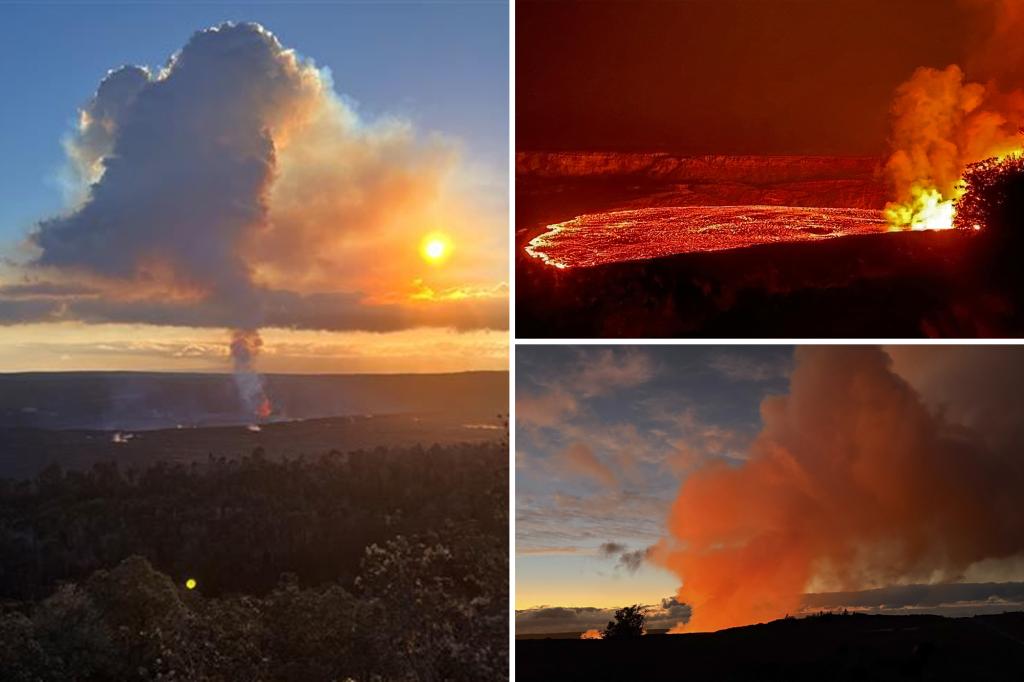The Kīlauea volcano, located within Hawaiʻi Volcanoes National Park on the Big Island of Hawaiʻi, is a captivating natural wonder that draws visitors from around the globe. Its fiery displays of molten lava, dramatic volcanic plumes, and unique geological formations offer a glimpse into the raw power of the Earth’s internal forces. However, this awe-inspiring spectacle also presents significant dangers, underscoring the critical need for visitor safety and responsible park management. A recent incident involving a toddler narrowly escaping a fatal fall over a cliff edge serves as a stark reminder of the inherent risks associated with exploring active volcanic landscapes.
The near-tragedy unfolded on Christmas night, amidst the heightened activity of the volcano, which had begun erupting just two days prior. The family, drawn by the spectacular eruption, ventured into a restricted area beyond the designated safety barriers. While engrossed in the breathtaking vista of the Kaluapele and Halemaʻumaʻu crater from the Kīlauea overlook, a toddler momentarily strayed from their family’s watchful eyes. Unbeknownst to the adults, the child darted towards the precipice of a 400-foot cliff, a sheer drop that would have undoubtedly resulted in a fatal fall. In a heart-stopping moment, the mother, realizing the imminent danger, lunged forward and snatched the child from the brink, averting a catastrophic outcome.
This incident underscores the crucial importance of adhering to safety regulations within national parks, particularly in dynamic and hazardous environments like active volcanic areas. The National Park Service (NPS) implements various safety measures, including clearly marked closed areas, physical barriers, prominent signage, and traffic management systems to protect visitors and mitigate risks. These measures are designed to guide visitors away from hazardous zones, prevent accidental incursions into unstable terrain, and manage visitor flow to minimize congestion and potential hazards. However, the effectiveness of these safety measures relies heavily on visitor compliance and responsible behavior.
The eruption of Kīlauea, commencing on December 23rd, naturally attracted a surge in visitors eager to witness this dramatic natural event. While the increased visitation provides an economic boost to the local area and allows more people to experience the wonder of volcanic activity, it also amplifies the potential for safety incidents. The higher volume of visitors can lead to overcrowding at viewing points, increased pressure on park resources, and a greater likelihood of individuals straying from designated areas. Furthermore, the dynamic nature of an active volcano means that hazards can shift rapidly, requiring constant vigilance and adaptability from both park management and visitors.
The inherent dangers associated with volcanic landscapes are multifaceted. Beyond the obvious threats of molten lava flows and volcanic gases, there are less apparent but equally significant hazards. The unstable terrain around an active volcano can include fragile cliff edges, hidden fissures, and ground weakened by geothermal activity. Volcanic eruptions can also produce airborne hazards like ash and volcanic debris, posing respiratory risks and potential damage to eyes. Changes in weather conditions can further exacerbate these risks, creating slippery surfaces, reduced visibility, and the potential for flash floods or landslides.
The NPS emphasizes that national parks, while showcasing the splendor of nature, are not playgrounds. Visitors are expected to exercise caution, respect park regulations, and prioritize their safety and the safety of others. The incident at Kīlauea serves as a potent reminder of the potential consequences of disregarding safety guidelines. Park Superintendent Rhonda Loh stressed the importance of responsible recreation, stating, “Your safety is our utmost concern, but we rely on everyone to recreate responsibly. National parks showcase nature’s splendor but they are not playgrounds.” This message encapsulates the shared responsibility between park management and visitors in ensuring a safe and enjoyable experience. The NPS provides the infrastructure and guidance for safe visitation, but individuals must ultimately take responsibility for their actions and adhere to the established safety protocols. This collaborative approach is essential to preserving the natural wonders of national parks while safeguarding the well-being of those who visit them.










